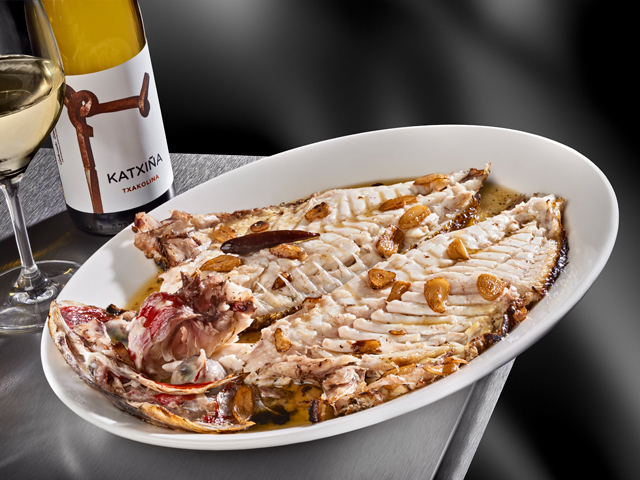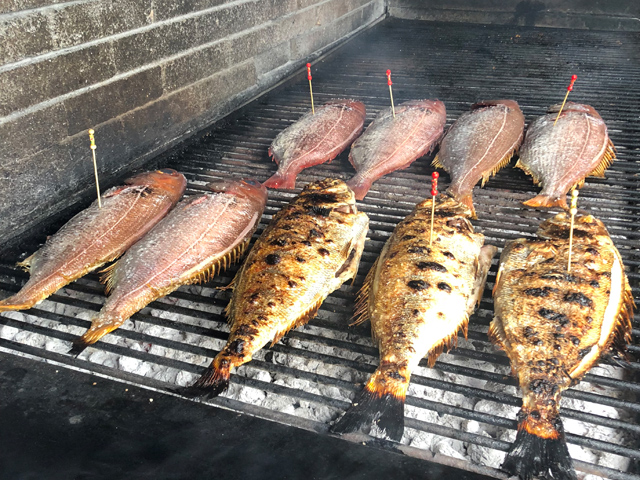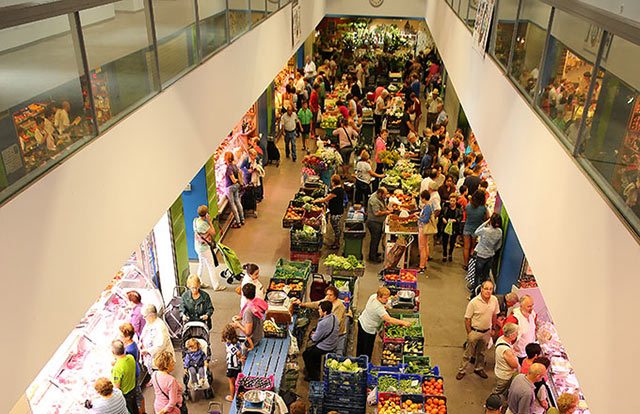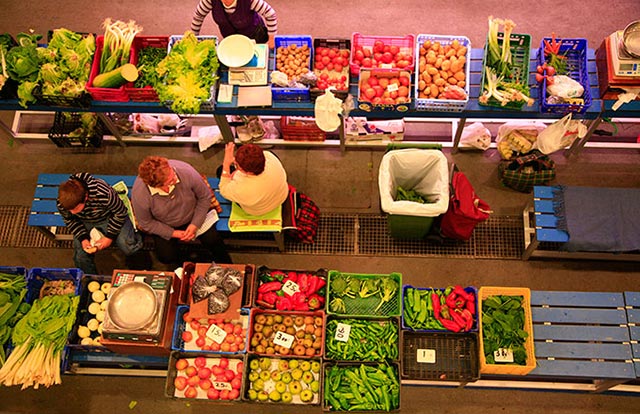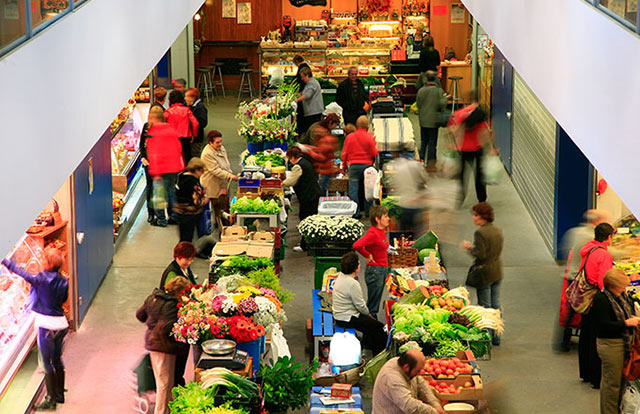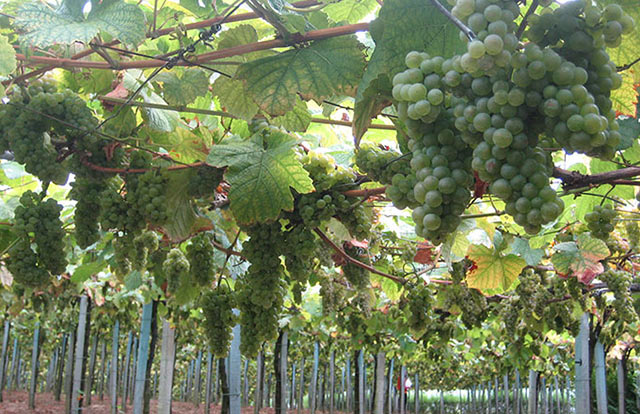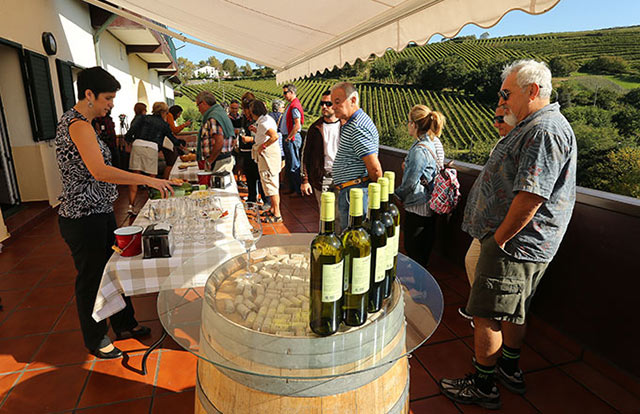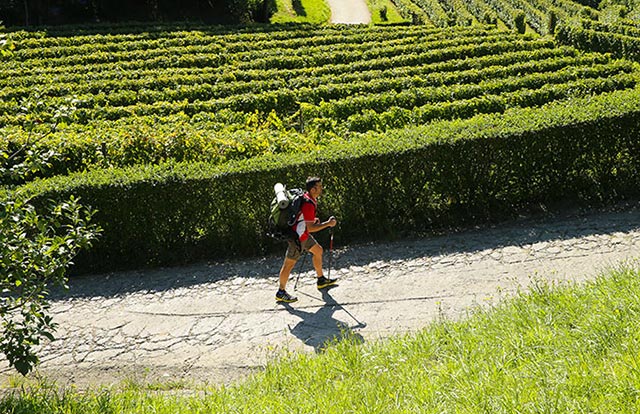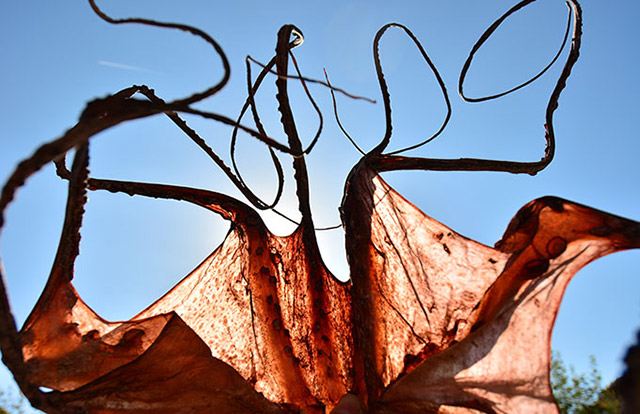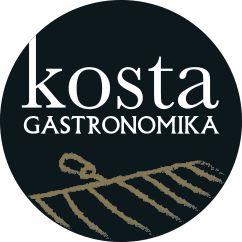
The crossroads are magical. Attractive on the one hand and mysterious on the other. The crossroads come together between the foreign and the local, the pride of the local people and the curiosity of the foreigners. This is what happens in Urola Kosta. An exceptional setting forged by nature and human beings throughout this long historic journey. Zumaia, Getaria, Zarautz, Orio and Aia are weaved together with the fishing nets of old and new customs.
The course of the Orio river links the histories of Orio and Aia together. In order to delve into one of the neighbourhoods of Aia, one firstly has to cross the town of Zarautz. Pagoeta Nature Park is located between both towns, with an area of 2,860 hectares. If we look from Zarautz, we can see the sun set behind mount San Antón, behind the renowned Mouse of Getaria. Two towns, that in the past competed in whale hunting.
Today, they offer a stunning itinerary from one town to the other, leaving the beaches in the background bordering the cliffs, in a beautiful setting a place where the seafarers and surfers from the five towns enjoy themselves.


The itinerary goes along the N634 road. This impressive road will take you from Getaria to Zumaia. A winding itinerary, awesome to walk along with rough sea. According to experts, it is one of the most attractive roads to drive along and enjoy the scenery. It’s a real delight to get lost in this cartography!
Crossroads… from the past, present, local, from abroad… Also in our gastronomy. Urola Kosta is a universe of images, textures and flavours, and each town has its own ambassador. But there is something that brings us together, in particular, the grill, an age-old tradition, that has produced top level culinary dishes.
The intense embers and fire draw the authentic flavour from the food, announcing the time to eat, a characteristic aroma permeating every corner of the streets, embellishing the plazas and streets, grills everywhere, in situ… No secrets are hidden. Proudly offering you what we are and what we have to offer.
A DELICIOUS ROUTE
SEA BREAM ORIO STYLE
One of Orio’s most beautiful sights, something not forgotten by visitors: the fishing boats resting in line on the final section of the Oria river, moored next to the town plaza, sheltered from the stormy seas. The ocean provides the region with utterly delightful food: anchovies, horse mackerel, mackerel, small fish, hake, elvers, and of course, sea bream, turned into sculpture by Jorge Oteiza, described by Anjel Lertxundi and sung by Benito Lertxundi.
Three great native sons of Orio. Try the sea bream “Orio style”: burnt oil, vinegar, garlic, peppers… But beforehand, go and discover Oteiza’s traces in his hometown.
Take a walk down to the beach. Or around its historic quarter, through the steep ensemble of medieval houses. Enjoy the Renaissance style 16th century buildings. Lived in by authors, seafarers, nuns, captains, traders, boat builders…
AIA CHEESE
Enjoy the peaceful feeling of Aia’s 11 neighborhoods. Shepherds and cheesemakers, cider and txakolí producers…the lung and driving force of the region.
All throughout Aia you will find tower-houses, chapels, churches, homesteads, mills, foundries, rivers, swamps, marshlands, valleys, wetlands, old convents, a hexagonal cemetery, caves and megalithic monuments. And a botanical garden (Iturraran), that organises a spectacular annual market of peculiar plants, including plants from the five continents.
A stunning biodiversity, making the cheese taste even better. So, “go and get yourself lost” in Aia and explore this beautiful itinerary and visit Aia’s restaurants and taverns for a good bite to eat.
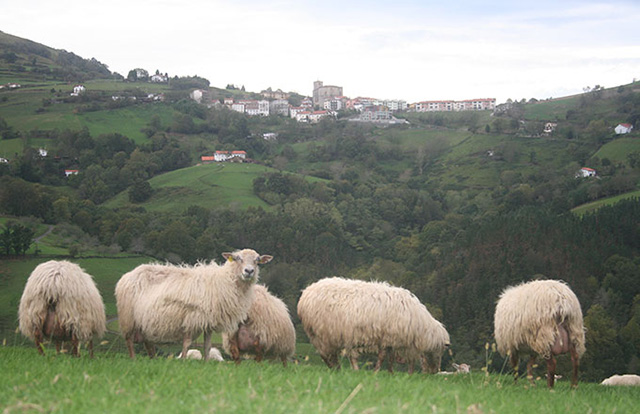
ZARAUTZ MARKET
Once it’s been tried, who can forget a Zarautz “piperrada” (roast peppers stew), prepared for accompanying red scorpion fish or a sauteed Norway lobster tail. Peppers, tomatoes…slowly cooked. The prime example of seasonal products from the local homesteads. Zarautz, a place for seasonal products and colours.
The Zarautz market was built in 1903, designed by Ramón Cortázar. The colour from the homestead orchards can be seen in the centre of the market: vegetables, flowers and plants. In the permanent and closed stalls, however, there are also delicatessens, cheese vendors, butchers, fishmongers, fruit vendors and flower vendors.
In the past the “baserritarras” (farmers) would bring their leftovers to the market, however they now prepare their products for sale.
TXAKOLÍ FROM GETARIA
Txakolí from Getaria is a symbol of Guipuzkoa’s identity. A young and fruity white wine. Made with Hondarribi Blanco (95%) and Hondarribi Tinto (5%) grape varieties, it has a slightly bitter taste, which sets it apart and a powerful character.
It should be served very cold; and all its aromas emanate from the delicate carbonic touch of each sparkling bubble.
Observing the characteristics of txakolí, one finds it’s always a unique combination for accompanying fish or seafood, and blends perfectly with signature cuisine, as well as traditional dishes. It is extraordinary as an aperitif and delicious for any meal.
OCTOPUS FROM FLYSCH
Zumaia’s coat of arms joins the mountain with the sea, quite representative of the region. At the mouth of the Urola and Narrondo rivers, before going out to sea, elvers are fished. You can find “pintxos” and top class miniature cuisine in any corner of Zumaia. However, if there is anything that truly stands out, is its octopus, the main ingredient of its “octopus soup”.
In the surroundings of the Geopark of the Basque Coast is where the most highly appreciated octopus is caught, among the famous intertidal abrasion platforms caused by the flysch. Thanks to this geological formation, all the treasures of world history can be seen: specifically, information on the biological, geological and climate change of the las 60 million years. If you look at the urban centre from here, you will see San Pedro Church overlooking the municipality, a large slender church, witness to eight centuries of history. However, San Telmo chapel is different, it is stuck in the hearts of the town’s native citizens, on the coastline, humbly observing the greatness.
The contribution of them all blends into our culture. It is the origin of the opinion that foreigners have about the Basques, linked to the after-meal conversation and the importance of eating well. Come to Urola Costa and enjoy yourself with us, come and savor the Gastronomic Coast!
SEA BREAM ORIO STYLE
One of Orio’s most beautiful sights, something not forgotten by visitors: the fishing boats resting in line on the final section of the Oria river, moored next to the town plaza, sheltered from the stormy seas. The ocean provides the region with utterly delightful food: anchovies, horse mackerel, mackerel, small fish, hake, elvers, and of course, sea bream, turned into sculpture by Jorge Oteiza, described by Anjel Lertxundi and sung by Benito Lertxundi.
Three great native sons of Orio. Try the sea bream “Orio style”: burnt oil, vinegar, garlic, peppers… But beforehand, go and discover Oteiza’s traces in his hometown.
Take a walk down to the beach. Or around its historic quarter, through the steep ensemble of medieval houses. Enjoy the Renaissance style 16th century buildings. Lived in by authors, seafarers, nuns, captains, traders, boat builders…
AIA CHEESE
Enjoy the peaceful feeling of Aia’s 11 neighborhoods. Shepherds and cheesemakers, cider and txakolí producers…the lung and driving force of the region.
All throughout Aia you will find tower-houses, chapels, churches, homesteads, mills, foundries, rivers, swamps, marshlands, valleys, wetlands, old convents, a hexagonal cemetery, caves and megalithic monuments. And a botanical garden (Iturraran), that organises a spectacular annual market of peculiar plants, including plants from the five continents.
A stunning biodiversity, making the cheese taste even better. So, “go and get yourself lost” in Aia and explore this beautiful itinerary and visit Aia’s restaurants and taverns for a good bite to eat.

ZARAUTZ MARKET
Once it’s been tried, who can forget a Zarautz “piperrada” (roast peppers stew), prepared for accompanying red scorpion fish or a sauteed Norway lobster tail. Peppers, tomatoes…slowly cooked. The prime example of seasonal products from the local homesteads. Zarautz, a place for seasonal products and colours.
The Zarautz market was built in 1903, designed by Ramón Cortázar. The colour from the homestead orchards can be seen in the centre of the market: vegetables, flowers and plants. In the permanent and closed stalls, however, there are also delicatessens, cheese vendors, butchers, fishmongers, fruit vendors and flower vendors.
In the past the “baserritarras” (farmers) would bring their leftovers to the market, however they now prepare their products for sale.
TXAKOLÍ FROM GETARIA
Txakolí from Getaria is a symbol of Guipuzkoa’s identity. A young and fruity white wine. Made with Hondarribi Blanco (95%) and Hondarribi Tinto (5%) grape varieties, it has a slightly bitter taste, which sets it apart and a powerful character.
It should be served very cold; and all its aromas emanate from the delicate carbonic touch of each sparkling bubble.
Observing the characteristics of txakolí, one finds it’s always a unique combination for accompanying fish or seafood, and blends perfectly with signature cuisine, as well as traditional dishes. It is extraordinary as an aperitif and delicious for any meal.
OCTOPUS FROM FLYSCH
Zumaia’s coat of arms joins the mountain with the sea, quite representative of the region. At the mouth of the Urola and Narrondo rivers, before going out to sea, elvers are fished. You can find “pintxos” and top class miniature cuisine in any corner of Zumaia. However, if there is anything that truly stands out, is its octopus, the main ingredient of its “octopus soup”.
In the surroundings of the Geopark of the Basque Coast is where the most highly appreciated octopus is caught, among the famous intertidal abrasion platforms caused by the flysch. Thanks to this geological formation, all the treasures of world history can be seen: specifically, information on the biological, geological and climate change of the las 60 million years. If you look at the urban centre from here, you will see San Pedro Church overlooking the municipality, a large slender church, witness to eight centuries of history. However, San Telmo chapel is different, it is stuck in the hearts of the town’s native citizens, on the coastline, humbly observing the greatness.
The contribution of them all blends into our culture. It is the origin of the opinion that foreigners have about the Basques, linked to the after-meal conversation and the importance of eating well. Come to Urola Costa and enjoy yourself with us, come and savor the Gastronomic Coast!


